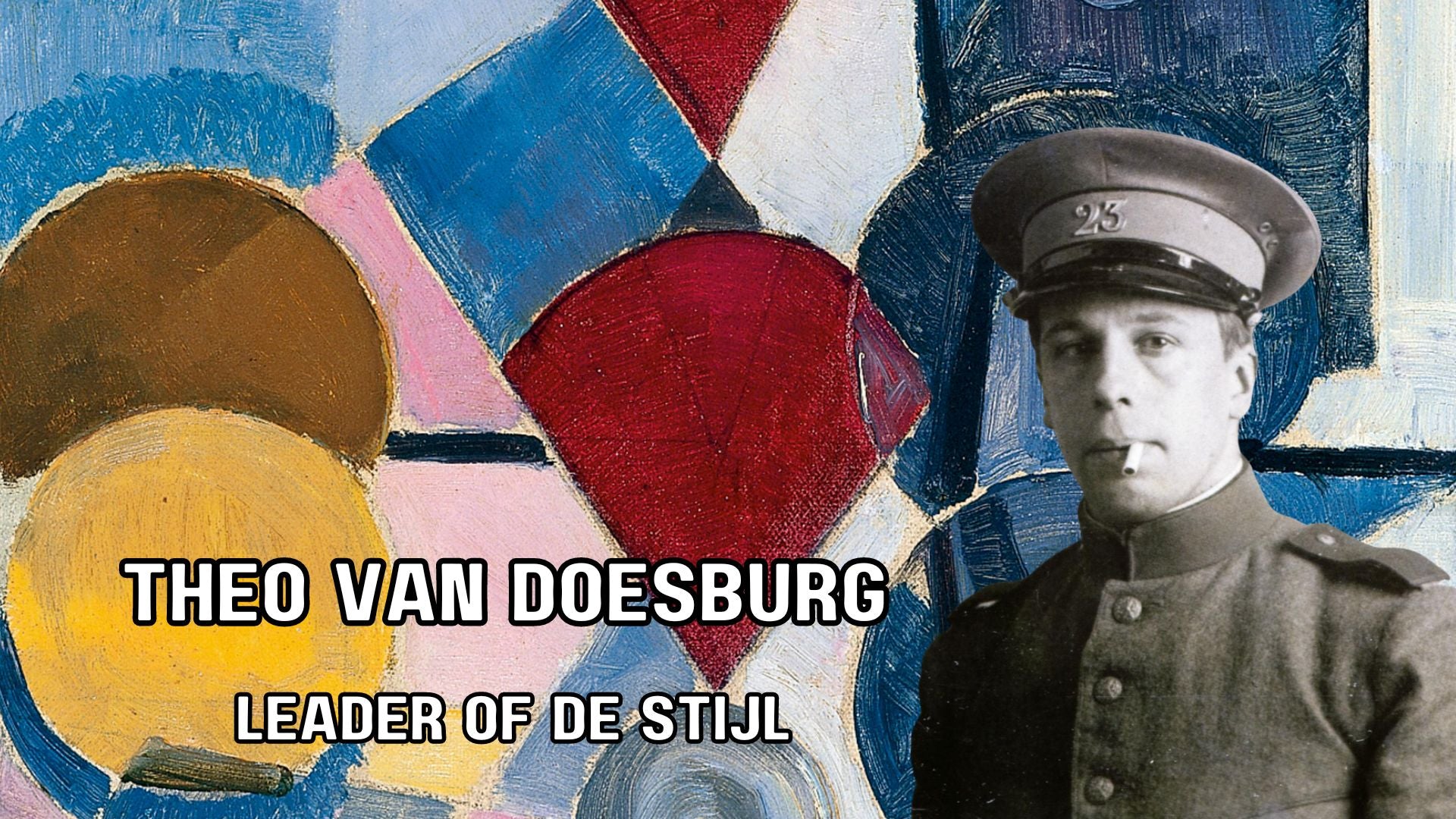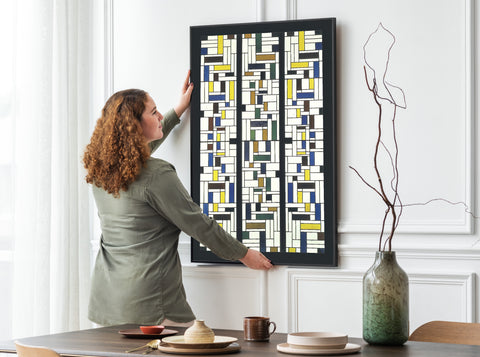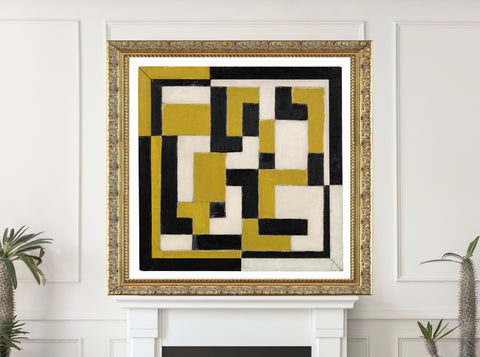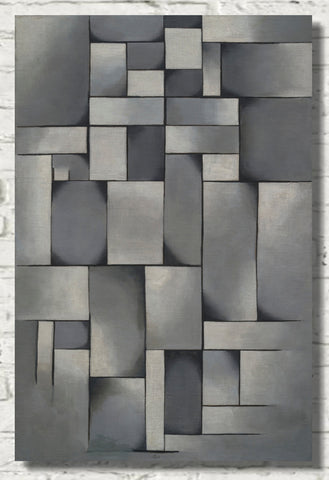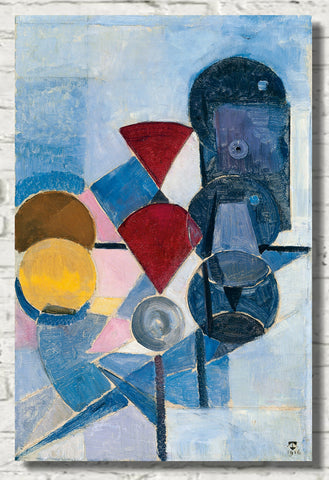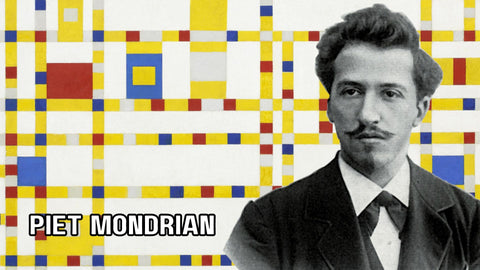Table of Contents:[hide]
The world of art history is punctuated with individuals who not only left an indelible mark on their contemporaries but also shaped the course of artistic movements for generations to come. Among these luminaries stands Theo van Doesburg, a Dutch artist whose multifaceted talents spanned painting, writing, poetry, and architecture. While his name might not be as widely recognized as some of his peers, his role as the founder and leader of the De Stijl movement ensures his legacy endures.
Early Life and Career Trajectory
Theo van Doesburg, born Christian Emil Marie Küpper in 1883 in Utrecht, Netherlands, embarked on a journey that would redefine the boundaries of artistic expression. His early years were marked by a diverse range of interests, from acting and singing to eventually gravitating towards painting. It was his encounter with Wassily Kandinsky's Rückblicke in 1913 that ignited the spark of abstraction in his work, setting him on a trajectory that would challenge conventional artistic norms.
The De Stijl Movement: A Revolution in Art
At the heart of van Doesburg's legacy lies the De Stijl movement, a radical departure from traditional artistic conventions. Founded in 1917 alongside fellow luminaries such as Piet Mondrian, Bart van der Leck, and others, De Stijl sought to distill art to its purest form through geometric abstraction and a palette reduced to primary colors. Van Doesburg's role as the movement's ambassador played a pivotal role in propagating its ideals across Europe, leaving an indelible mark on the trajectory of modern art.
Architectural Innovations and Design Endeavors
Beyond the realm of painting, van Doesburg's influence extended to architecture and design. His collaboration with luminaries like Sophie Taeuber-Arp and Hans Arp in designing the Aubette entertainment complex in Strasbourg showcased his commitment to integrating art into everyday life. Moreover, his geometrically constructed alphabet and pioneering efforts in typography laid the groundwork for future experimentation in graphic design.
Legacy and Influence
Theo van Doesburg's influence transcends his lifetime, resonating across disciplines from art and architecture to design and typography. His emphasis on abstraction, geometric form, and the intersection of art with everyday life continues to inspire generations of artists and designers. From the iconic paintings of Piet Mondrian to the minimalist architecture of the Bauhaus movement, van Doesburg's legacy remains woven into the fabric of modern aesthetics.
Conclusion: Honoring a Visionary
In commemorating the life and work of Theo van Doesburg, we pay homage to a visionary whose pioneering spirit continues to shape the contours of artistic expression. From the bold strokes of his canvases to the innovative designs of his architectural endeavors, van Doesburg's legacy serves as a testament to the enduring power of creativity and imagination.
Theo van Doesburg Prints and Canvas Panels
Prints and ready to hang canvas panels of Theo van Doesburg's paintings are available in a range of sizes with fast worldwide delivery.
Theo van Doesburg FAQ's
-
Who was Theo van Doesburg?
- Theo van Doesburg, born Christian Emil Marie Küpper, was a Dutch artist, writer, poet, and architect. He is best known as the founder and leader of the De Stijl movement.
-
What is the De Stijl movement?
- De Stijl, Dutch for "The Style," was a modern art movement founded in 1917. It aimed to achieve simplicity and abstraction through geometric forms and primary colors. Van Doesburg played a pivotal role in shaping and promoting this movement.
-
What were Theo van Doesburg's primary artistic endeavors?
- Van Doesburg engaged in various artistic pursuits, including painting, architecture, design, poetry, and writing. He experimented with abstract geometric compositions, architectural designs, and innovative typography.
-
What influenced Theo van Doesburg's artistic style?
- Van Doesburg's early works were influenced by Amsterdam Impressionists and Vincent van Gogh. However, his encounter with the writings of Wassily Kandinsky in 1913 propelled him towards abstraction and the spiritual essence of art.
-
What led to the split between Theo van Doesburg and Piet Mondrian?
- Van Doesburg's friendship with Mondrian, another prominent figure in De Stijl, experienced strains due to artistic differences. Disagreements over the use of diagonal lines and divergent ideas about space and time led to a temporary split in 1924.
-
What is Elementarism?
- Elementarism was an art movement proposed by Theo van Doesburg after his split with Mondrian. It emphasized the dynamic aspects of diagonal lines and sought to rival Mondrian's Neo-Plasticism.
-
How did Theo van Doesburg contribute to architecture and design?
- Van Doesburg collaborated on architectural projects, including designing houses and the decoration for the Aubette entertainment complex in Strasbourg. He also pioneered efforts for an International of Arts and designed geometrically constructed alphabets.
-
What was Theo van Doesburg's literary pseudonym, and why did he use it?
- Van Doesburg published Dada poetry and anti-philosophical prose under the pseudonym I. K. Bonset. He used this alias to challenge conventional thinking and oppose individualism in literature.
-
What was Theo van Doesburg's lasting influence on art and architecture?
- Van Doesburg's work continues to inspire artists, designers, and architects globally. His contributions to abstraction, geometric composition, and innovative typography have left an indelible mark on modern art and design.
-
How did Theo van Doesburg's life conclude?
- Van Doesburg remained active in various art groups until his declining health forced him to move to Davos, Switzerland, where he passed away from a heart attack on March 7, 1931. His legacy lives on through his pioneering contributions to the arts.

